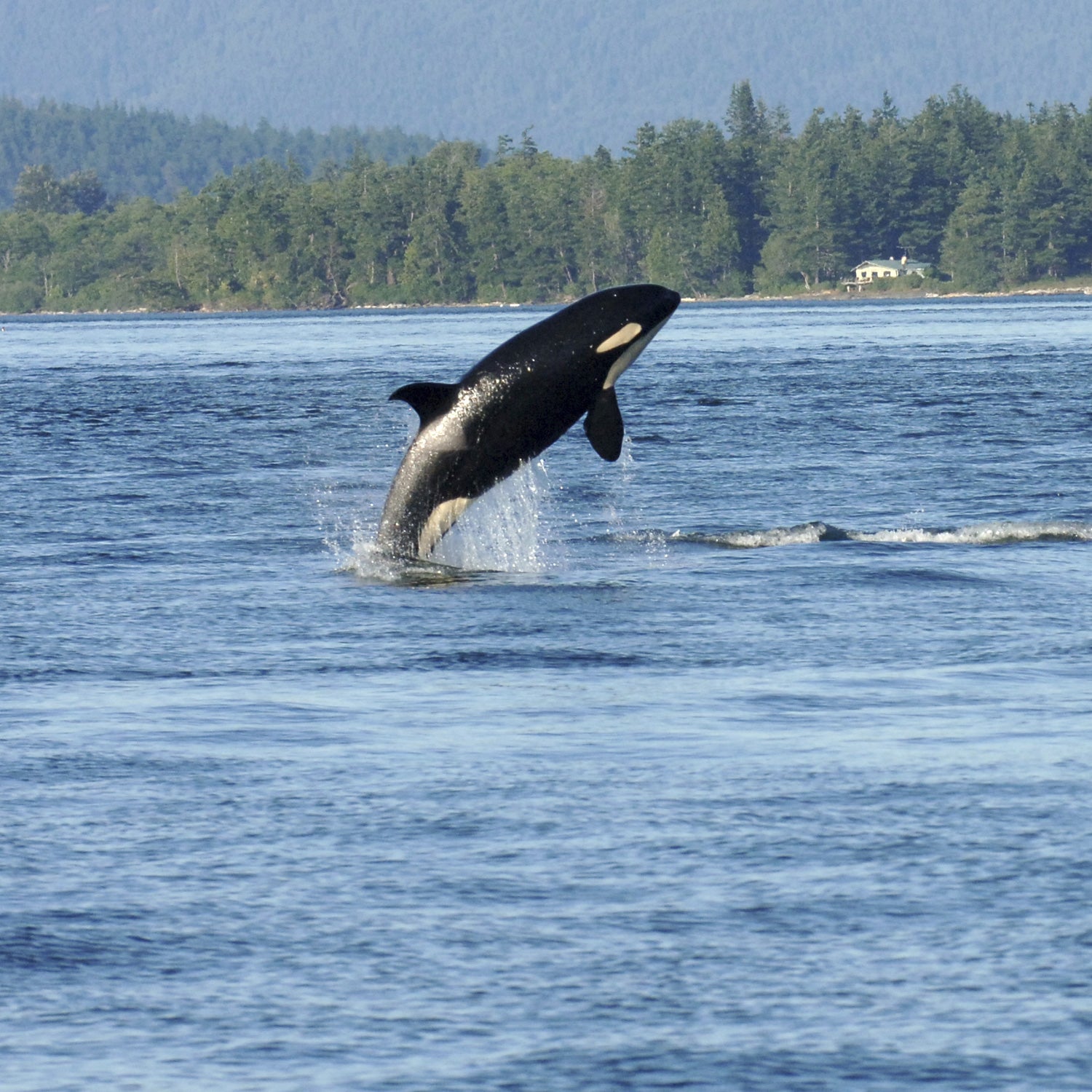The ocean is a��world of sound—and if you’ve ever scuba dived off the Northwest coast, you understand why.
Visibility in the Salish Sea, the frigid waterway that connects Seattle and Vancouver to the Pacific, is often poor. So the 85 meticulously tracked endangered killer whales that ��live a life of acoustics. The clan, a remarkably family-oriented bunch, uses whistles and vocalizations to hunt, socialize, and migrate together. (The orcas of these waters are some of��the only mammals we know of that live their entire life within their maternal family units.) Each family has developed a signature dialect to interact and distinguish relatives. “Family is everything to these killer whales,” says marine biologist Rob Williams.
But unfortunately for these blackfish, the Salish Sea is one of the busiest shipping routes in the world. A of more than 11,000 tankers and cargo vessels passed through the coastal waters last year,��bringing along that travel tens of miles underwater. Human activity is so loud in the straits between Vancouver and Seattle that the southern resident killer whales cannot communicate with each other 62 percent of the time, according to a in the journal Animal Conservation. And on busy days, when the wind kicks and the shipping traffic is heavy, it’s too loud for the whales to interact a full 97 percent of the time.
“We’re drowning the ocean in sound,” says , the Natural Resources Defense Council’s director of marine mammal protection. Constant noise is upending the way whales and dolphins hunt, navigate, and form social bonds. Imagine trying to converse with a friend—or even think straight—while the subway train passes by. “It’s having a huge impact. It’s destroying their ability to communicate,” says Jasny, a leading expert on how ocean noise pollution affects whales. “If they’re not calling, they’re not effectively breeding or foraging.”��
“We’re trying to find a way where we can do the most good for the whales while inconveniencing the fewest people who make their living from the sea.”
has dedicated his career to protecting the whales and dolphins around British Columbia. A native of Vancouver Island, Williams grew up combing the pebble beaches where local orcas . His father, an airman in the Canadian Navy, dropped sonobuoys off the coast to listen for prowling Russian subs. After graduate studies, Williams formed the non-profit ��to bring scientists and conservationists together to produce original research on the region’s marine wildlife. Last year, he�� for his work.��Underwater acoustics has become a specialty, he says, because “you really can’t be a whale conservation biologist without acknowledging that their world is an acoustic one.”
But Williams says the charismatic killer whale families off the coast of Seattle and Vancouver may already be doomed to a life of cacophony. “We’ve saturated their core summer habitat with noise,” he says. “We can ask ships to slow down, we can ask ships to go on the other side of an island, but I think realistically we’ve missed the opportunity to have a quiet marine protected area for them.”
��
So Williams and his group set about to find an alternative solution. In a paper published last month in the , Williams and his co-authors lay out the case for observing what they call “acoustic sanctuaries.” These are habitats off the coast of British Columbia where marine mammals spend time, but that are not currently polluted by anthropogenic noise. With a dozen underwater microphones and a 23-meter-long schooner, Williams’ team hunted for “places where the ocean soundscape has not been dominated by human generated noise.” These quiet areas could be pain-free places for governments to formally institute quiet zones, the paper argues. Ships wouldn’t have to be rerouted, the authors note, they would simply have to continue avoiding sensitive areas.
“We’re trying to find a way where we can do the most good for the whales while inconveniencing the fewest people who make their living from the sea,” Williams says.
William’s proposal is the first to of its kinds, Jasny says. “The notion of an acoustic sanctuary has been floated among policy people as an abstract idea for some time, but this paper makes it real,” he says. “It identifies specific candidates for acoustic sanctuaries in an increasingly burdened area.”
Although marine noise pollution is attracting more research, Gordon Hempton,��an acoustic ecologist and an expert on noise pollution on solid ground, says the field is still lagging. “Bottom line is that sound travels 10 times faster and clearer in salt water, but because it is out of sight and out of mind for us, there has been a huge lack of needed research to protect marine environments,” he says.��
To us humans, the very idea of ��didn’t seem very important until 100 years ago. Then, as we began lurking underwater and submarine warfare became an integral part of the First World War, underwater noise became a critical field of study. Sonar, underwater surveys, and sonic oil and gas exploration quickly started piercing the every corner of the northern hemisphere’s seas. Astonishingly, all this took place within the lifetime of the matriarch of the Salish Sea orcas—J2 or “Granny,” the oldest of the southern residents, was .��
“Places that used to be full of fish grunting and whale singing are now full of the constant groan of ship noise,” Williams says. “Isn’t it time to take stock? The way that we do to see how much old growth coastal range forest is left for grizzly habitat or how much of the tropical rain forest in Brazil is left unlogged. Here are some places where the ocean soundscape has not been dominated by human generated noise.”��


